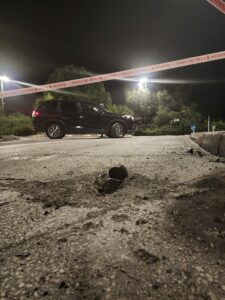On February 16, Hezbollah leader Nasrallah delivered his traditional speech on “Martyrs’ Commanders” Day. Which is commemorated in memory of Abbas Musawi, Imad Mughniyeh, and Arab Harb (one of Hezbollah’s first religious leaders who was assassinated in 1984 by Lebanese locals, who Hezbollah claims were sent by Israel).
In his speech, Nasrallah responded to two key Israeli “messages.”
The first is the statements of the IDF Chief of Staff, Aviv Kochavi, from January 26 regarding the nature of the IDF’s conduct in the next confrontation with Hezbollah.
Kochavi noted that in the next confrontation with Hezbollah, the IDF will attack all Hezbollah targets protected by the “Human Shield” and treat them all as military targets.
The rationale behind Kochavi’s words is that these attacks will prevent the killing of many Israeli civilians, who are constantly under threat from Hezbollah’s missiles and rockets. Missiles and rockets that are launched at population centers in Israel from sites located as part of the “Human Shield” tactic.
This statement by Kochavi effectively undermines the “human shield” tactic on which Hezbollah’s deployment of military infrastructure is based.
The second Israeli message is a large-scale exercise by the Israeli Air Force, which was carried out during the past week. The exercise was performed openly and loudly in practice. During the last days and nights, Lebanese residents in general and Hezbollah members, in particular, could hear the noise of the engines of dozens (and possibly hundreds) of planes circling in the sky above them. The message was loud and clear…
In the exercise, the Israeli Air Force proved its ability to attack about 3,000 targets in 24 hours. This is compared to the 2006 war in which it managed to attack “only” a few thousand targets during an entire month.
In addition to these two “messages”, it was recently determined in the IDF’s annual intelligence assessment that there is a real likelihood of military deterioration vis-à-vis Hezbollah, which will lead to several days of limited fighting with Israel. Hezbollah may interpret Kochavi’s remarks and this statement in the intelligence assessment as Israel’s intention to launch a limited pre-emptive strike against Hezbollah.
In his speech, Nasrallah tried to maintain the balance of power between Hezbollah and Israel. Unfortunately, Nasrallah did not excel in originality this time and chose as his way to set equations and threaten.
Nasrallah’s first message in this context is that there is no difference between Israeli civilians and Israeli soldiers. All Israeli citizens will be targeted in the next conflict because all Israelis are soldiers.
The second message is that the Israeli civilian home front will see things it has not seen since the establishment of Israel and Hezbollah will hit where it wants to hit.
Nasrallah’s third message is that an Israeli attack on a Lebanese village will result in Hezbollah attacking an Israeli village… An Israeli attack on a Lebanese city will result in an attack on Hezbollah in an Israeli city…
It is important to mention that from their point of view, Hezbollah still has “Unfinished Business” with Israel against the background of Hezbollah’s active killing in an airstrike in the Damascus area in July 2020.
The “Unfinished Business”, the Israeli “messages”, the annual intelligence assessment, and Nasrallah’s current speech do not contribute to calming the region, which as always has the potential for rapid deterioration at any given moment.
It seems that each side suspects that the other side is preparing a “surprise” that it intends to realize shortly…






